Friend Next Door Archetype
Befriending Your Audience with a Nuanced Appealing Brand (with Design Examples)
Down to earth and approachable, the Friend Next Door Brand Archetype, also known as the Everyman Brand Archetype, is one of Jung’s 12 Brand Archetypes.
If you’re wondering, how can you build a Friend Next Door brand that embraces nuance and deeply connects with your people, you’ve come to the right place.
Many of the entrepreneurs and businesses who reach out to me feel confused about how to create a multifaceted, nuanced Friend Next Door brand that feels unique to them.
So I decided to create this guide, just for you.
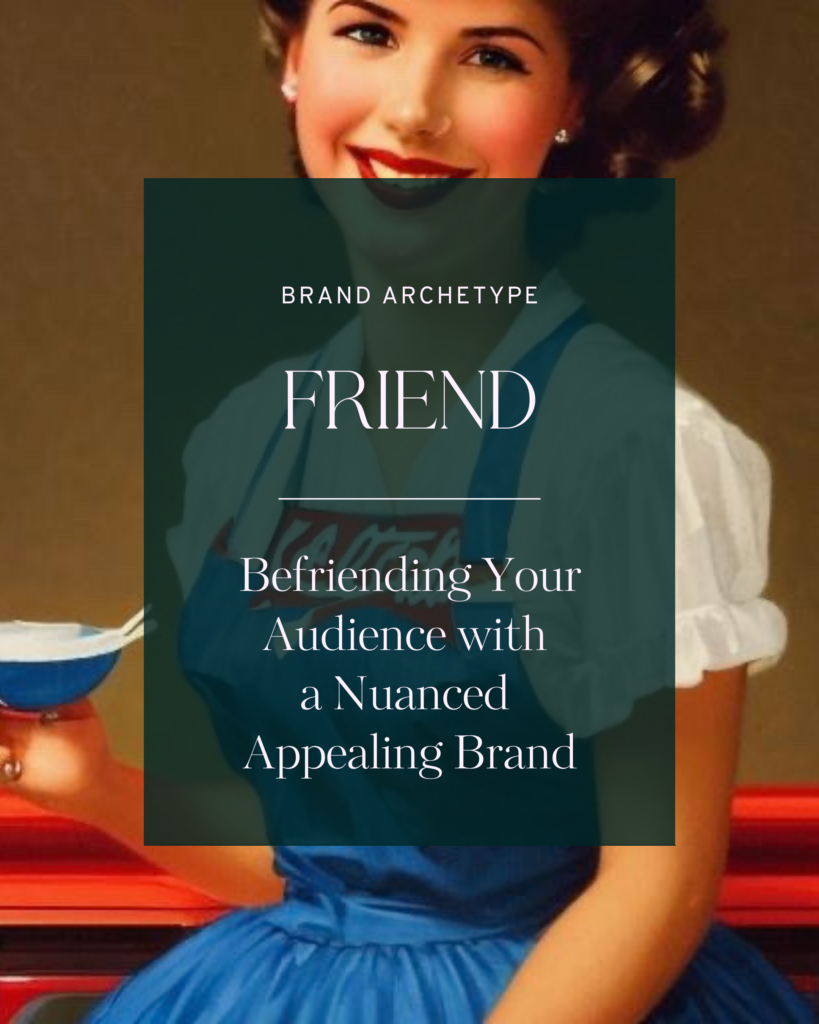
Friend Next Door archetype in branding: What is it?
Let’s first dive into the Friend Next Door brand persona in its pure, undiluted form.
Friend Next Door archetype symbolism
Often associated with approachability, empathy, and reliability the Friend Next Door archetype represents the instinctual drive to belong and foster meaningful relationships.
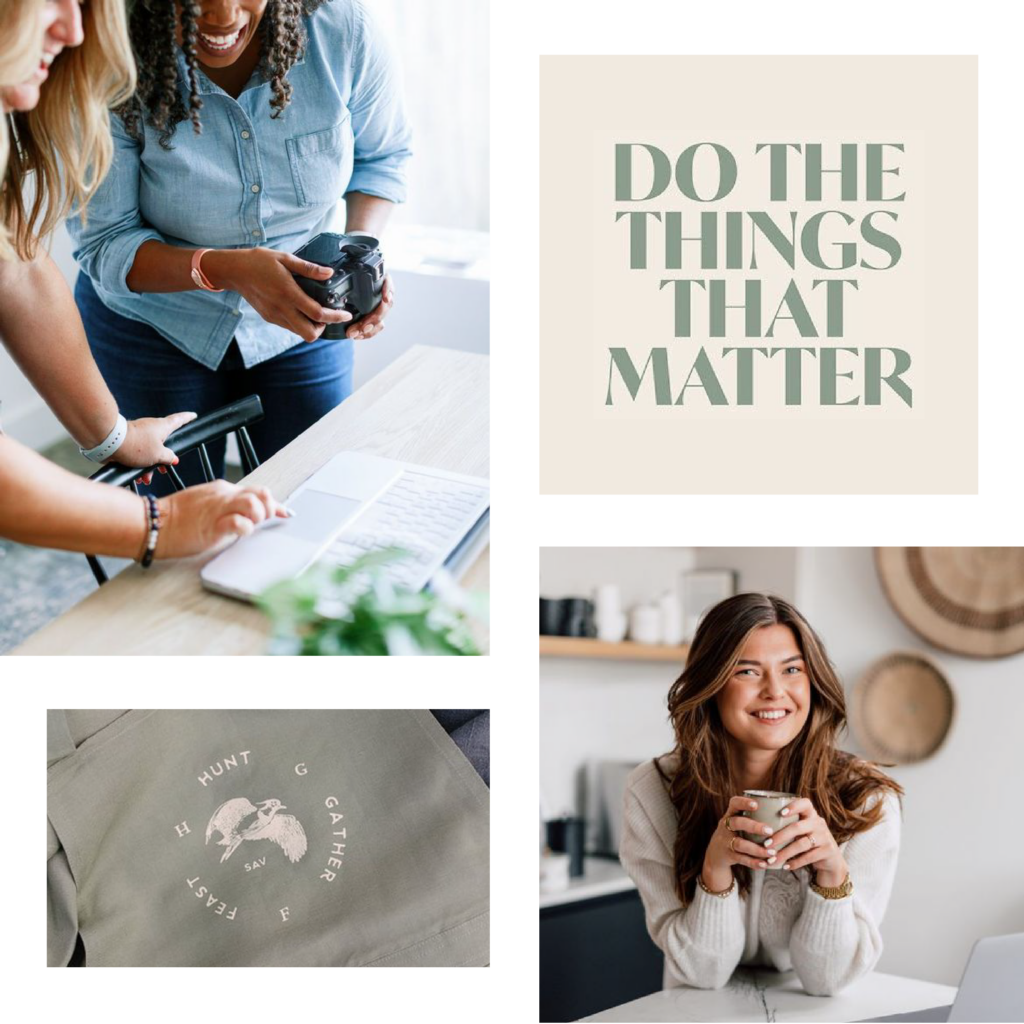
The Friend Next Door’s…
DESIRE: Connection with others
GOAL: To belong, fit in
FEAR: Standing out, seeming to put on airs, and being exiled or rejected as a result
TRAP: Give up self to blend in, in exchange for only a superficial connection
GIFT: Realism, empathy, lack of pretence
STRATEGY: Develop ordinary solid virtues, the common touch, blend in
Businesses that embody healthy Friend Next Door archetype prioritise building strong customer relationships based on trust, empathy, and personalised care. These businesses foster a welcoming and inclusive environment where customers feel valued and heard.
In The Hero & The Outlaw, Margaret Mark talks about 5 Friend Next Door Levels:
THE CALL: Loneliness, alienation
LEVEL 1: The orphan, feeling abandoned and alone, seeking affiliation
LEVEL 2: The joiner, learning to connect, fit in, accept help and friendship
LEVEL 3: The humanitarian, believing in the natural dignity of every person regardless of his or her abilities or circumstances
THE SHADOW: The victim who is willing to be abused rather than be alone, or the lynch-mob member, willing to go along with abuse in order to be one of the gang
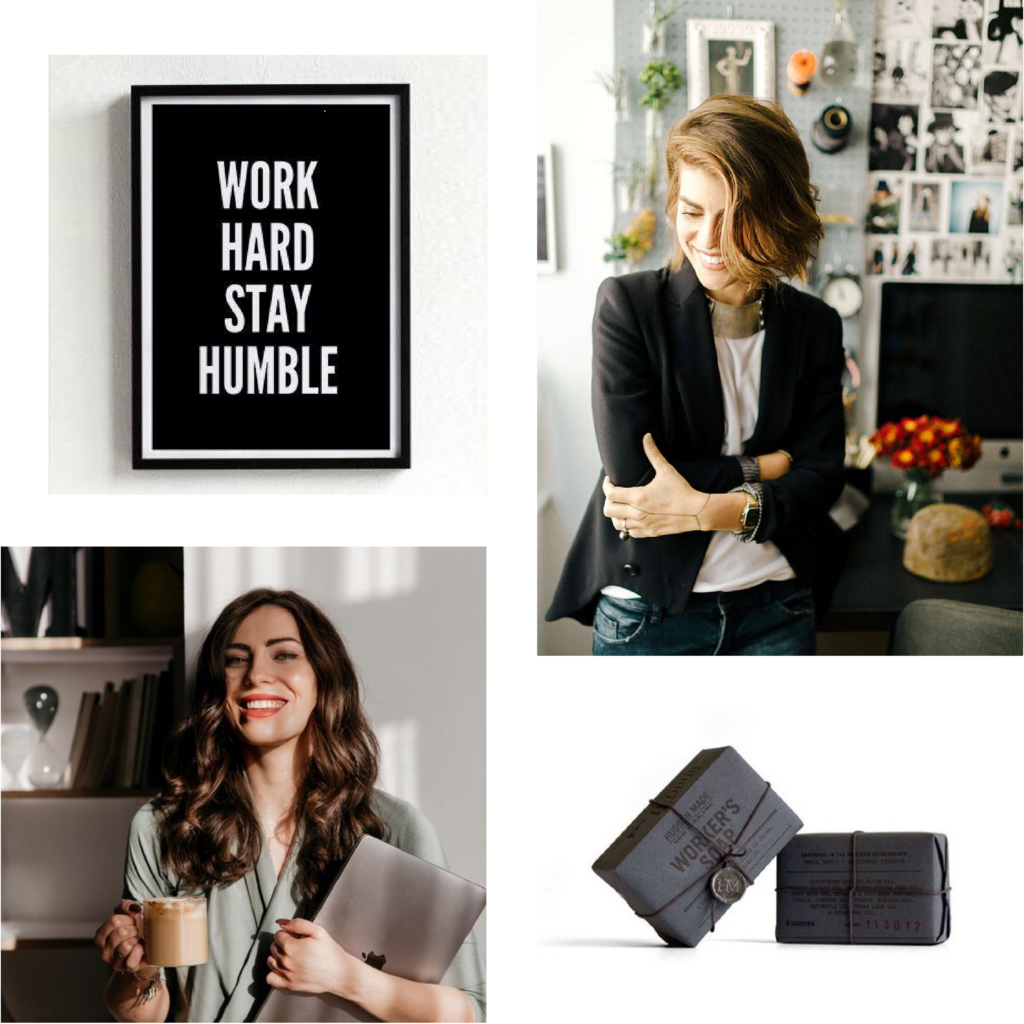
To uncover the core motive behind your brand (which is the crucial first step to discover your most aligned brand archetypes), take my brand motivator quiz.
“Okay, the Friend Next Door Brand Archetype sounds like what I’m going for. What next?”
If the Friend Next Door archetype feels like a good fit, fantastic! Before we get too deep into the world of Jung and the Friend Next Door archetype, I want to share a little secret as a Branding Expert: Being too tethered to Jung’s original psychology and clinging to one single generic archetype will shoot your brand in the foot.
Why? Humans connect with humans. We are all unique combinations of our innate natures and experiences.
As a result, our brands need to reflect what our businesses bring to the table in an authentic way. We build trust by aligning our presentation with our business experience (behaviour).
I’m sure you’ve noticed many brand strategists insist on a rigid approach to brand strategy. They teach their clients that a business has to wholeheartedly embody one single archetype, perhaps with a secondary support, paving the way for generic sameness.
But embodying one single archetype leads to generic brands that don’t connect with anyone. Especially if you want to stand out from your competitors in a saturated market that is continually growing.
It is human nature to explore and meld ideas together in new interesting ways. Evolution is inevitable!
Yes, we do need to narrow the field to make sure that we have a style and personality to embody. We cannot be all things to all people.
But we can and should create beautiful, unique combinations that allow us to embrace what sets us/our business apart, instead of feeling guilt or shame at not perfectly fitting into the current boxes.
When we begin to think about what drives us, how we approach problems, our unique way of delivering our services, products or solutions… a more fascinating brandscape begins to take shape.
Brand archetypes offer a method to explore your brand, not a dogma to rigidly follow.
The best brand identities, the ones that will feel truly unique, authentic and connect with your audience, are always a multi-faceted combination of archetypes.
A strong brand strategy, rooted in a curated duo or triad of archetypes, is what will give your brand clarity while differentiating you from your competitors.
“I had tears reading how you’ve captured my purpose, my people and my why SO DAMN WELL. Seriously, it’s totally given me a really clear direction and sense of purpose.
I think you’ve hit the perfect mark between rebellion, expression, glamour, sophistication and rock and roll!“
– Danee – Killer Queen Creative
As you bring more dimensionality to your brand, you’ll foster more trust because you’re being more human.

Practical questions to help you identify if your brand is a Friend Next Door brand
Is Your Brand a Friend Next Door? Let’s talk about brand values now.
Ask yourself: Is the goal of your company to foster genuine connections and build lasting relationships with customers? Does your company value authenticity, trust, and a warm, welcoming atmosphere? If you answered yes, it is very likely your brand has Friend Next Door energy, somewhere in the mix.
To attract the right customers, maintain their trust and get the most from your marketing dollars, you should do all you can to communicate this philosophy to your customers.
“I was so impressed by Elise’s comprehensive deep dive into my core offering, mission and values. No stone was left unturned. My stunning new brand assets are timeless and reflect her understanding of my business and the audience we want to attract into our community. I’m now in a happy place to move my business forward with pride.“
– Rita De Michele – Onus app
To diagnose the true motivator behind your brand (which is the crucial first step to discover your most aligned brand archetypes), take my brand motivator quiz.
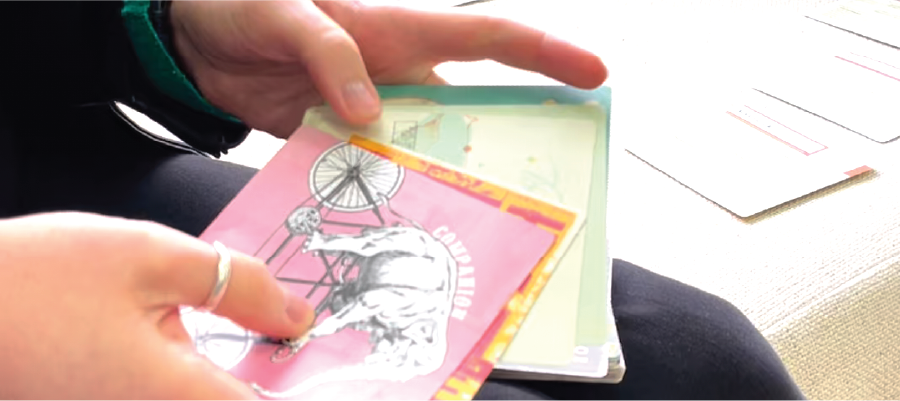
How to make your Friend Next Door brand identity truly memorable and unique
In my work with my clients, I always work to help them claim a combination of archetypes, rather than a single one. Since Jung’s brand archetypes are naturally fluid and flow across one another, there are endless ways to blend them together.
For example, one wing might look like a Motivator (an archetype that highlights how you want to make people feel) and one wing might be your Approach (how you deliver that feeling). Different combinations of archetypes can create vastly different brand identities.
“I’m so in love with Elise and the recent brand strategy work she did for me! I was over the moon with the results and it really felt like she got EXACTLY what the core of my brand was, and developed it in a concise, strong and cohesive way.
I’m so glad I engaged with her to bring my new website to life – I feel like I’ve learned so much and have a much clearer view on what I’m about! I highly recommend her wherever you are in the branding process – whether you’re just starting out, or if you’re refining your brand and taking it to the next level like me. Thank you Elise, you’re a superstar!!”
– Danee – Killer Queen Creative
If there’s one thing I want you to take away from this article, it’s to let go of your preconceptions about what a certain brand archetype must look like.
Friend Next Door archetype and brand differentiation
Jung proposed a variety of different subcategories for the Friend Next Door archetype, each reflecting a different dimension of the Friend Next Door. We can use these to add layers of nuance to a Friend Next Door brand.
Advocate
Citizen
Everyman
Networker
Servant
Leveraging these will help you bring more nuance to your Friend Next Door brand identity. Ideally, you will go further than this and blend multiple archetypes together without leaning into cliche characteristics.
Friend Next Door archetype and target audience
The Friend Next Door archetype delivers a customer experience that is warm and inviting, yet familiar and comforting. Every touchpoint is designed to create a comfortable atmosphere, making customers feel like they are among friends.
Down to earth with a downplayed, casual presentation style, the Friend Next Door looks to blend in as one of the group. The Friend Next Door works well for brands that value accessibility and strive to cater to all, for example IKEA, Target, eBay, and energy providers.
Industries like hospitality, food and beverage, wellness and personal care, retail, and community-based services often have Friend Next Door energy because they care about fostering genuine connections, providing personalised experiences, and creating a warm and welcoming environment for their customers.

Strengths and weaknesses of the Friend Next Door Archetype in marketing and advertising
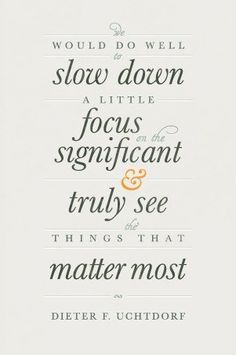
To create a Friend Next Door brand that resonates, my best advice is to create a brand that’s inclusive and trustworthy. Listen humbly to your audience and relate to their experiences with a down-to-earth vibe.
For example, with a Friend Next Door brand, strive to foster an experience of belonging and acceptance. Make an effort to reassure people that they are equal, valued and accepted just the way they are. Bring your customers into decision-making and ask them for regular feedback on your services or product offering.
The flip side is that it’s easy for Friend Next Door brands to appear bland, without personality, purpose or direction. In trying to please and include everyone, they can lose sight of what they’re trying to achieve. By trying to speak to everyone, you can sometimes wind up speaking to no one.
Friend Next Door branding examples
Here are examples of the Friend Next Door archetype in marketing and design in the wild.
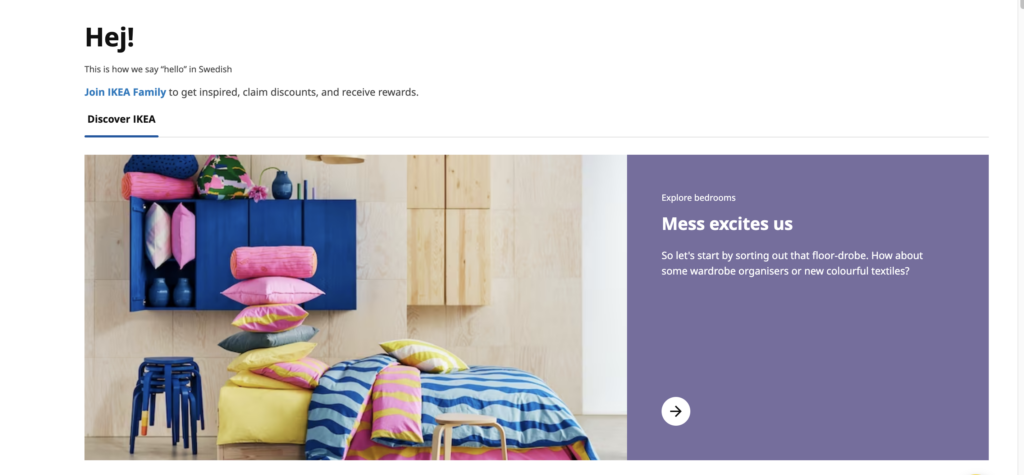
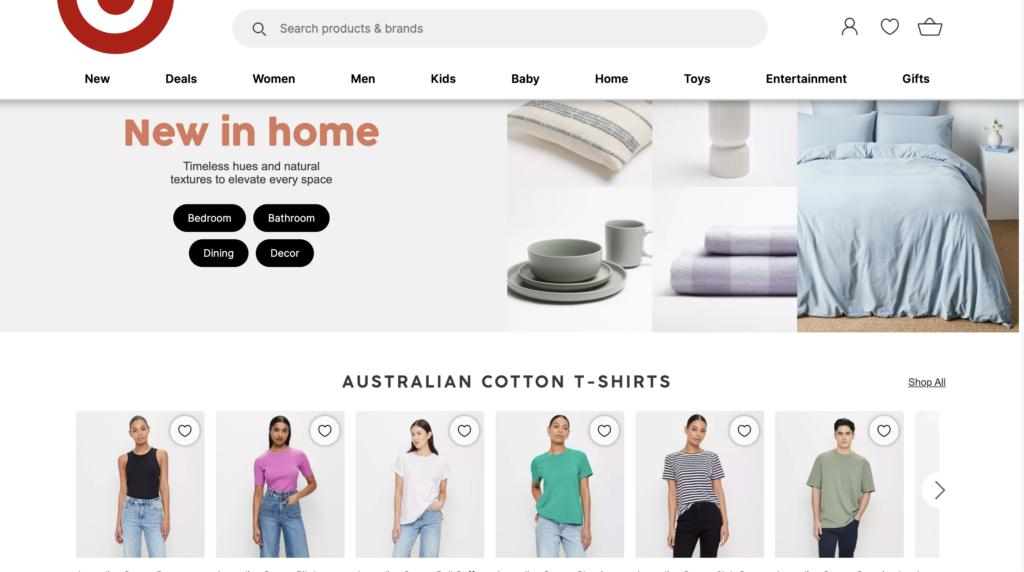
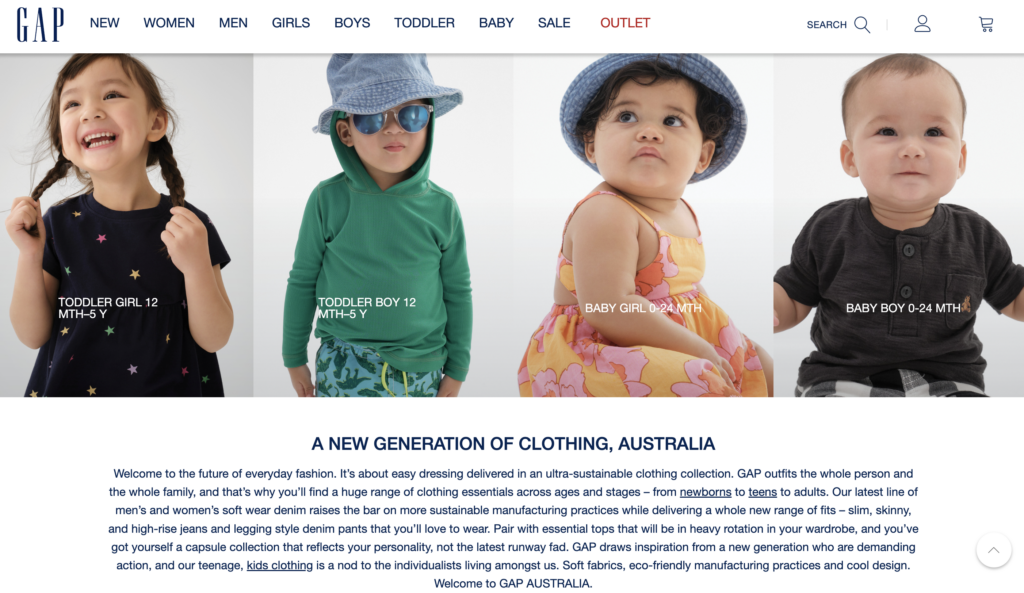
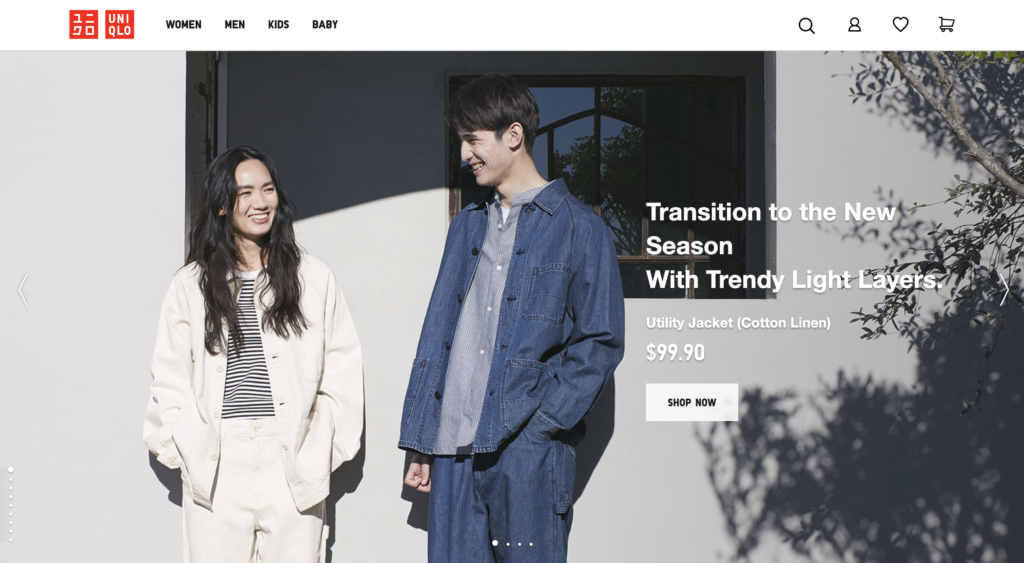
Here are some of the Friend Next Door brands I’ve had the pleasure of working with.
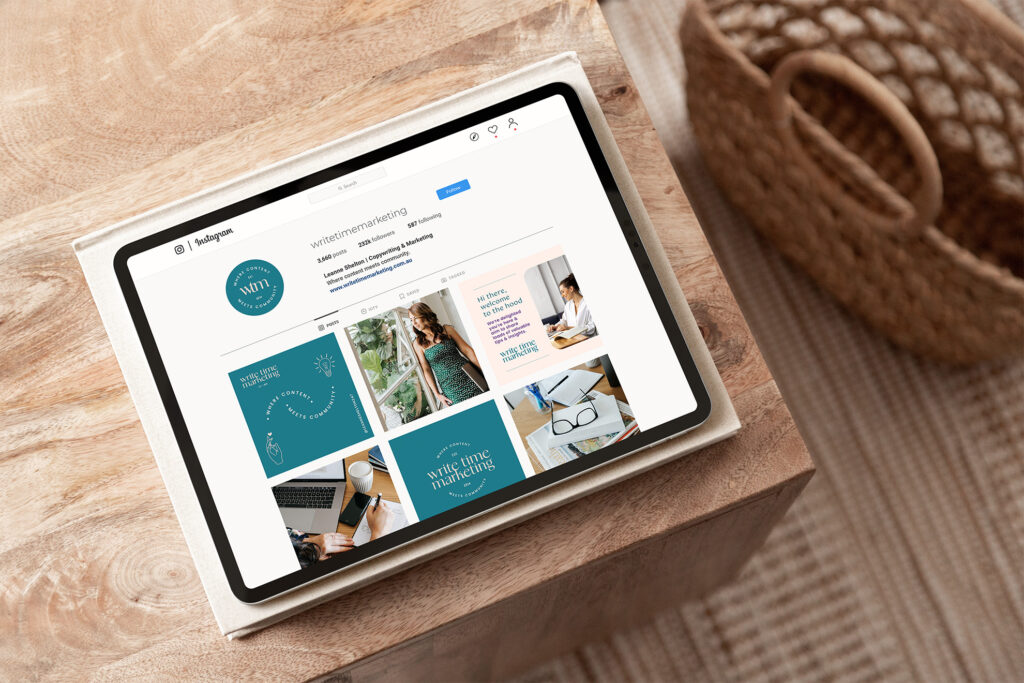
Arney Recruitment’s business has been all about creating his own niche in the industry, building his own legacy and making sure his people feel seen, understood and part of his crew.
A bolder take on the Friend Next Door brand archetype, mixed with the Creator archetype, Arney Recruitment’s colour palette is brighter and more saturated than a typical Friend Next Door brand. The language is friendly and down to earth, with rounded, easy-to-read typography.
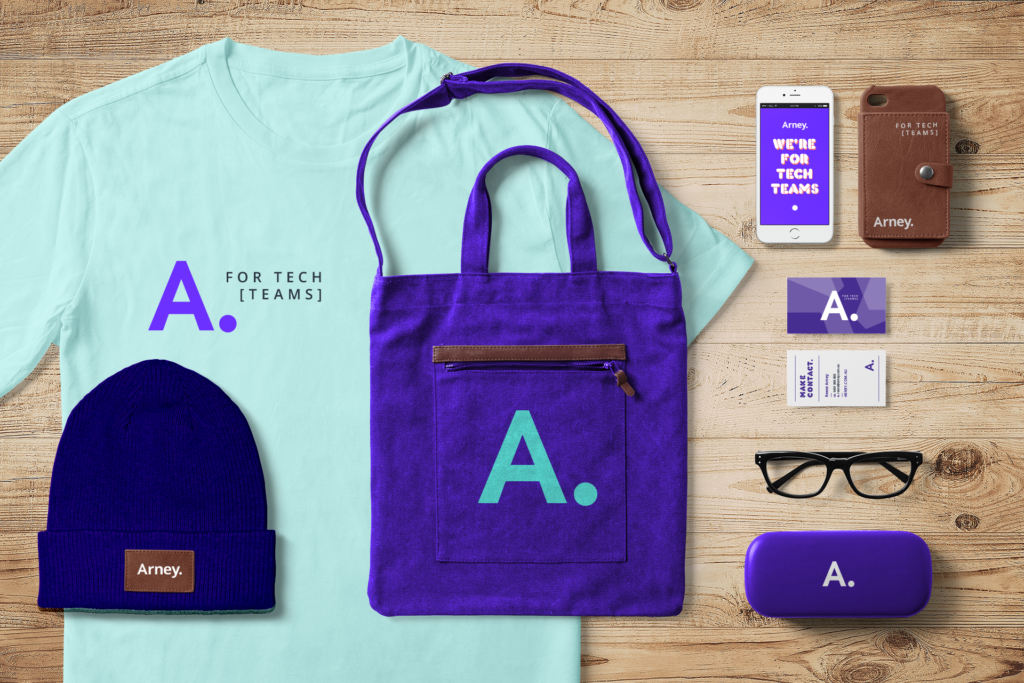
The Bottom Line is a fantastic expression of the Friend Next Door archetype. This guy is in it for the relationships and supporting people in their businesses. He loves to connect with people and can chat for hours.
Their archetype combo is: Samaritan (Caregiver), Citizen (Friend Next Door) and Companion (Lover).
From a design perspective, this translates to graphics that are playful in an understated, friendly way, giving a relaxed feel to an otherwise straight-laced industry.
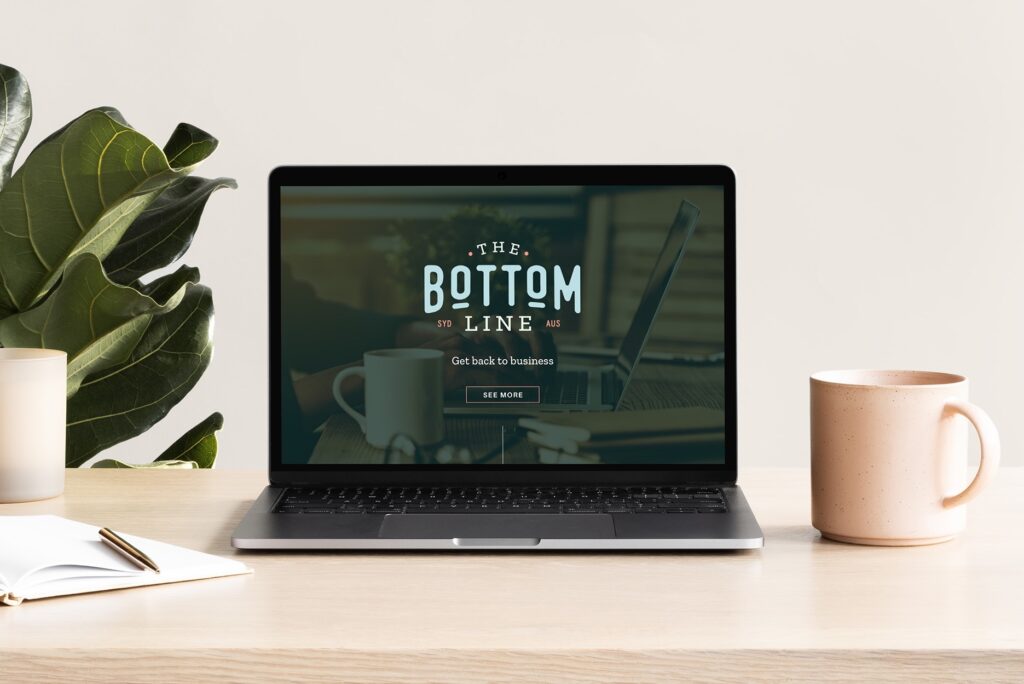
Designing for the Friend Next Door archetype
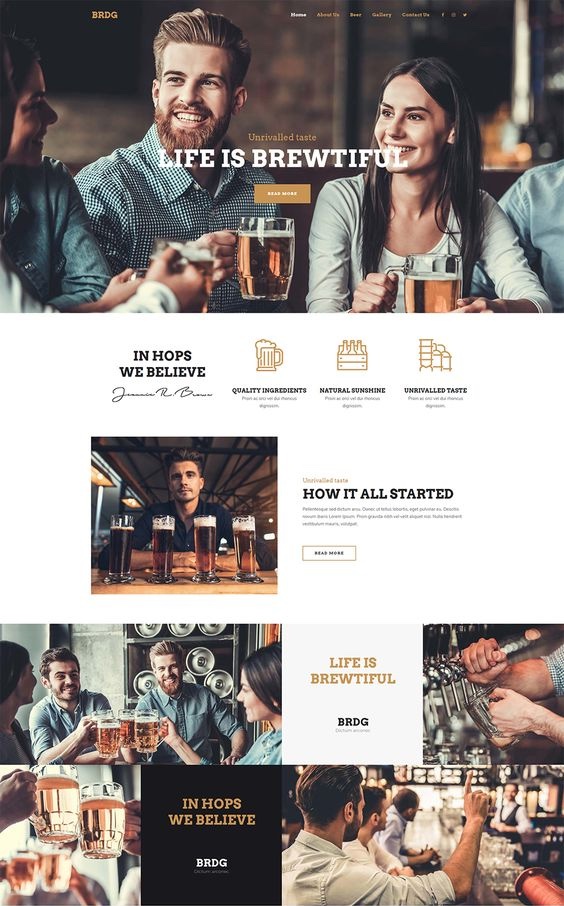
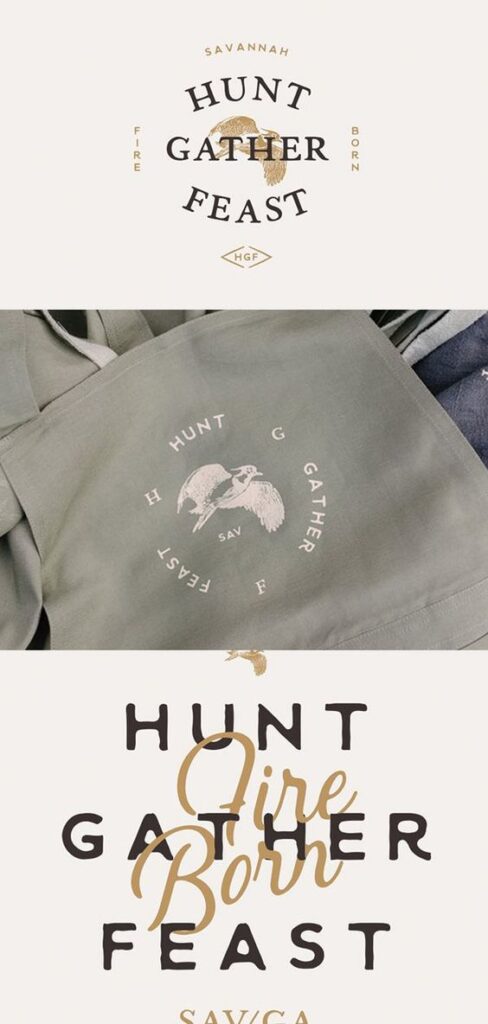
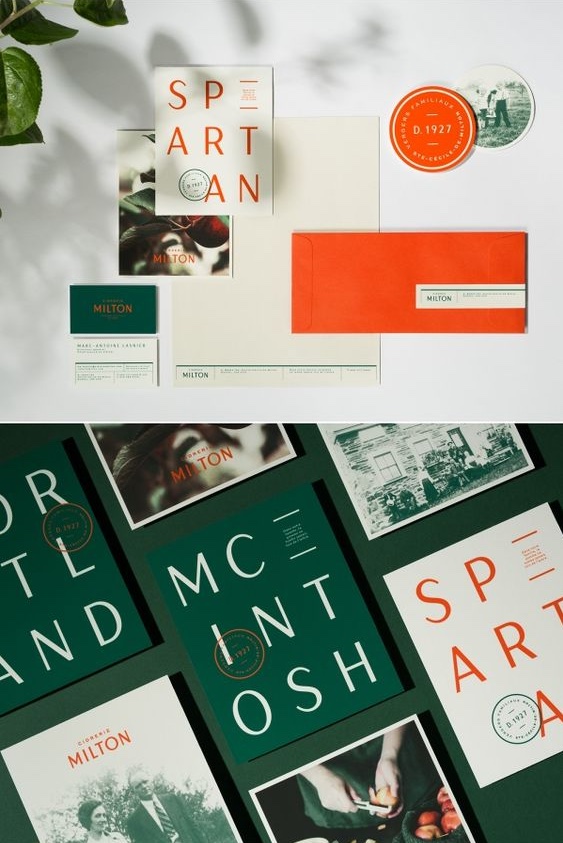
Friend Next Door archetype and visual branding
Friend Next Door archetype visuals are wholesome, relaxed, and welcoming. Often, the Friend Next Door style is blended with a second style to give it more impact.
Here is a curated Pinterest board I’ve created for the Friend Next Door archetype.
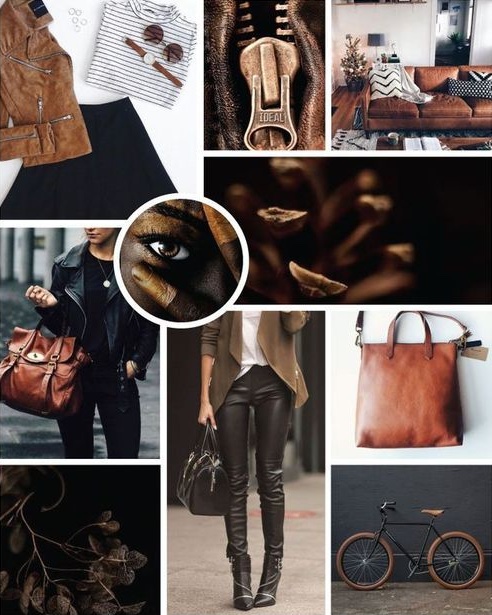
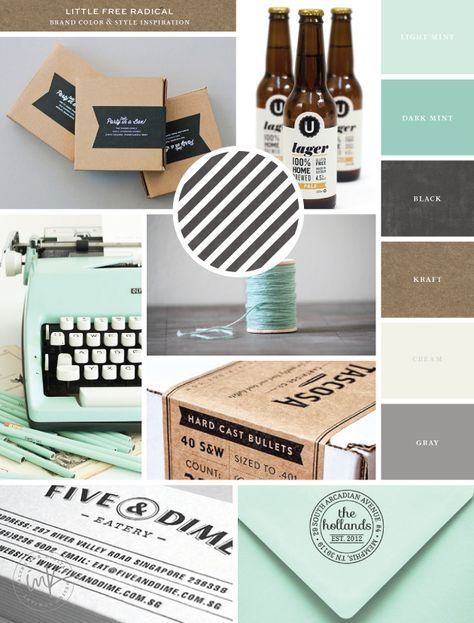
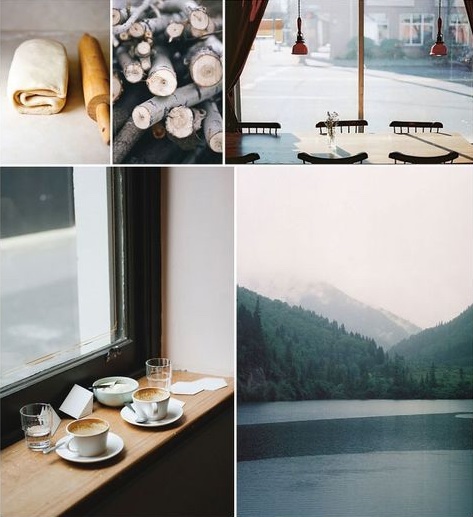
Friend Next Door archetype design and colour psychology
The Friend Next Door archetype tends to instil a feeling of warmth and relaxation with its colour palette. Colours often are often softened mid-tones with an earthy or natural feel, with toned-down pops of colour.
Contrast will be toned-down. Think warm charcoal instead of black, or off-white instead of pristine white. Other colours may include soft green, soft-warm orange, light brown, soft teals and blues, and soft muted yellows.
The purpose of colour for this archetype is to attract connections rather than ‘stand out’ in a bold, dramatic way.
A word on the Friend Next Door archetype design and colour psychology
The use of colour in your brand design instantly affects the emotions and moods of the people viewing your brand.
Planning out your brand’s colour scheme can be challenging. I have two practical tips for you: 1) I recommend using primary and secondary colours that contrast well and 2) not being afraid to break traditional colour schemes in your industry.
Corporate colour schemes tend to be minimal while creative brands can include more colours.
If you know your audience belongs to a certain culture, always consider the meaning of the colours you choose within the context of that culture.
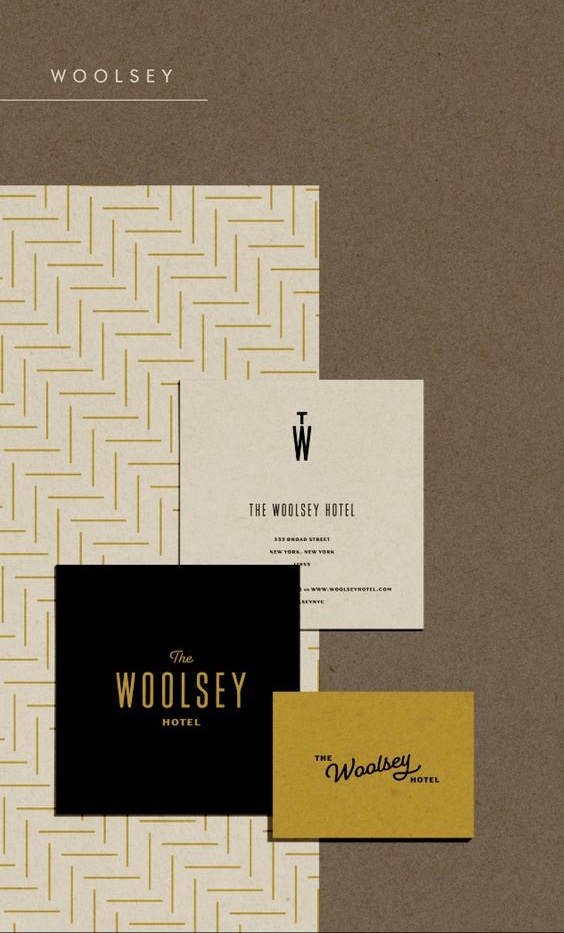
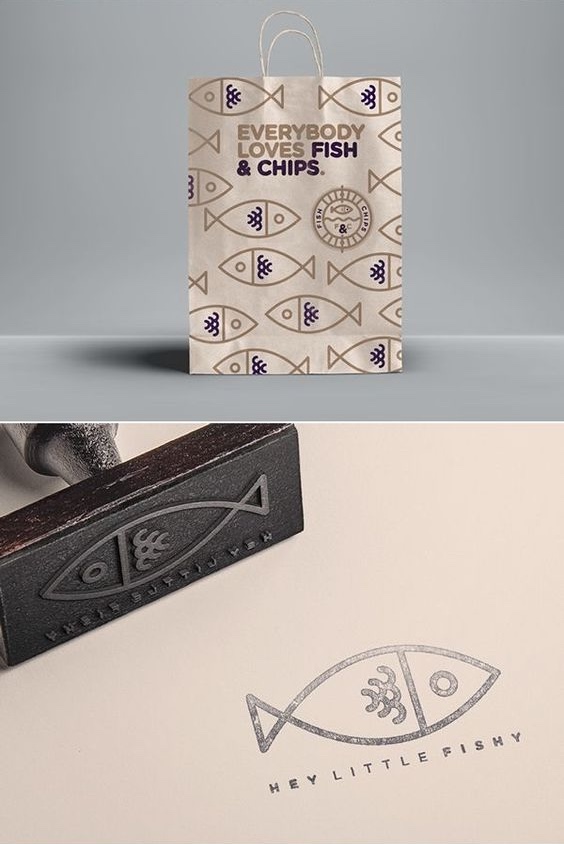
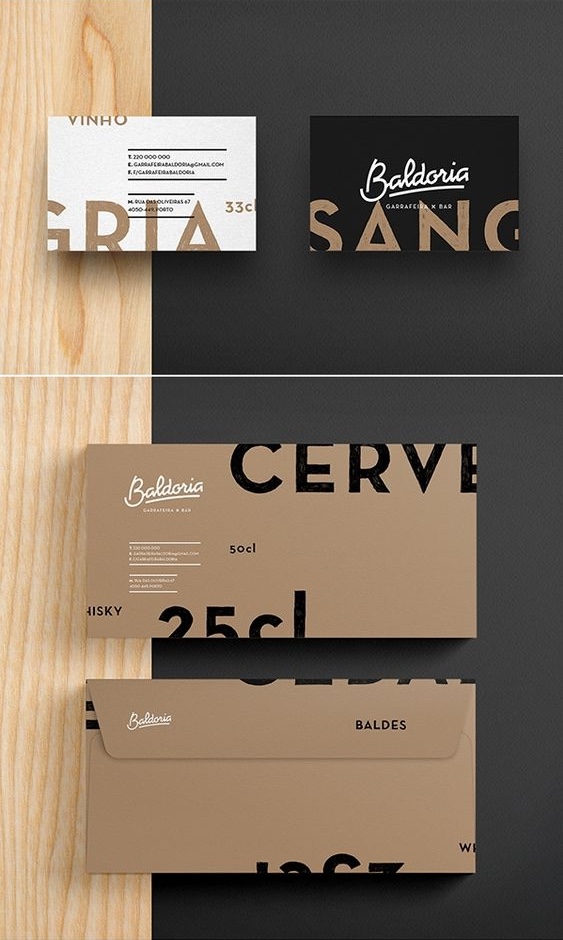
Friend Next Door archetype and typography
The Friend Next Door brand is drawn to fonts that express stability and grit. The typography should be easy to read and feel friendly with minimal detail. For example, handwritten fonts that look like they were written on a chalkboard or home whiteboard are perfect.

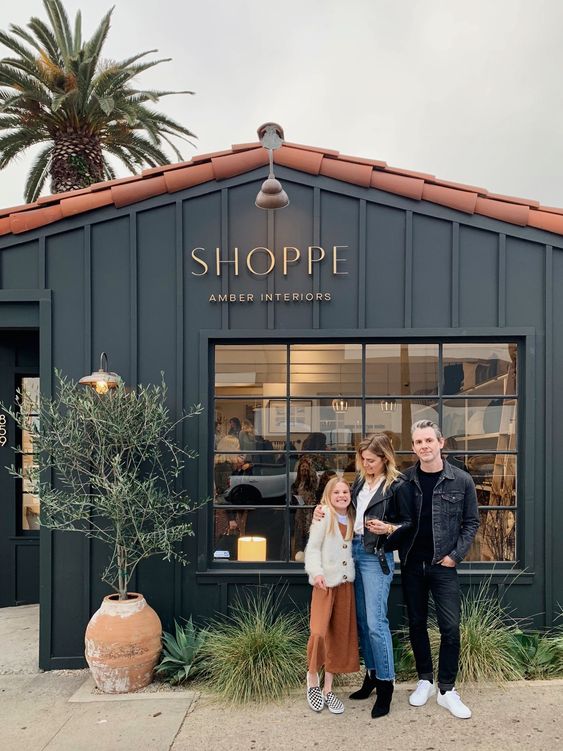

Friend Next Door archetype and photography
Friend Next Door photography is friendly, welcoming, relaxed and happy. It invites people into everyday moments or scenarios, so the audience can easily picture themselves in the same scene. For example, relaxed on a comfy couch with a cup of tea, or friends in beanies, jeans and boots happily huddled around a campfire.
The central goal is to create connection and a sense of inclusion.
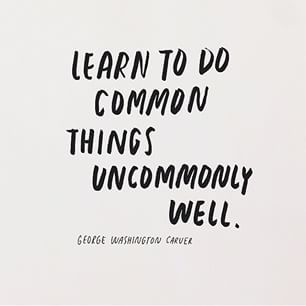
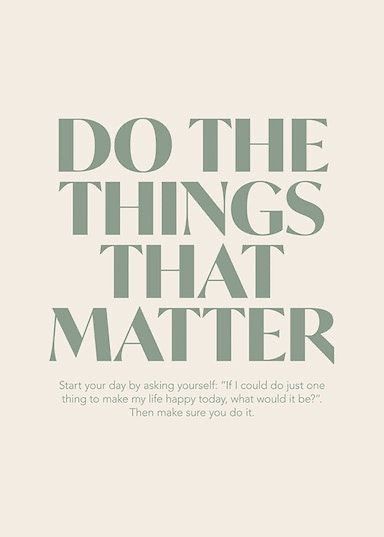
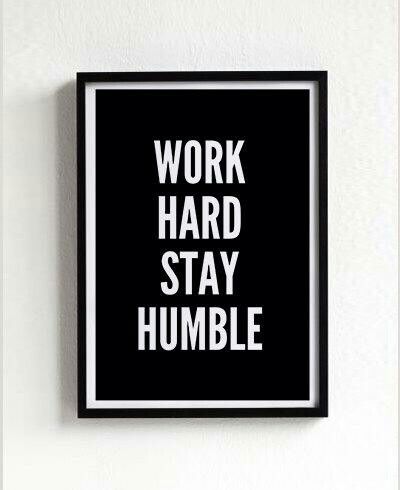
Friend Next Door archetype and brand messaging
The Friend Next Door brand voice is amiable, cheerful, bantering, forthright, relaxed, and sympathetic.
Their voice says: “Here’s this cool thing I want to tell you about because I like you and I figure you’d like cool things.”
Branding with the Friend Next Door archetype – Practical tips
Here are actionable tips to bring your Friend Next Door brand to life with visual storytelling techniques.
Tips for showcasing your Friend Next Door brand on Instagram
- Opt for colours that feel warm, inviting, and create a sense of inclusivity, friendliness, and approachability.
- Embrace authenticity in your Instagram content. Showcase the “real” aspects of your brand, acknowledging that life isn’t flawless. Your ideal clients seek relatability and appreciate a brand that is honest about its imperfections.
- Offer a glimpse behind the curtain of your business’ daily operations. Show your team at work, share fun moments, and provide insights into how you create and deliver your products or services.
- Feature real customers in your posts, stories, or even through Instagram takeovers. This humanises your brand.
- Speak the language of your target audience and use a conversational tone in your captions. Avoid jargon or formal language that may create a barrier between your brand and your followers.
Curious to discover your Brand Archetype? Start by taking this quiz to uncover your Core Motivator.

Pass the Salt, founded by Elise Elliott, is a branding studio devoted to shaking up brand strategy, design and creative direction for entrepreneurial dreamers, doers and shakers who smirk at rules and high-five at the adventure of exploration.
Elise’s branding framework helps clients find language for their authentic business identity, connect with their dream audience and find greater ease in their business.
Friend Next Door Archetype
Befriending Your Audience with a Nuanced Appealing Brand (with Design Examples)
Down to earth and approachable, the Friend Next Door Brand Archetype, also known as the Everyman Brand Archetype, is one of Jung’s 12 Brand Archetypes.
If you’re wondering, how can you build a Friend Next Door brand that embraces nuance and deeply connects with your people, you’ve come to the right place.
Many of the entrepreneurs and businesses who reach out to me feel confused about how to create a multifaceted, nuanced Friend Next Door brand that feels unique to them.
So I decided to create this guide, just for you.

Friend Next Door archetype in branding: What is it?
Let’s first dive into the Friend Next Door brand persona in its pure, undiluted form.
Friend Next Door archetype symbolism
Often associated with approachability, empathy, and reliability the Friend Next Door archetype represents the instinctual drive to belong and foster meaningful relationships.

The Friend Next Door’s…
DESIRE: Connection with others
GOAL: To belong, fit in
FEAR: Standing out, seeming to put on airs, and being exiled or rejected as a result
TRAP: Give up self to blend in, in exchange for only a superficial connection
GIFT: Realism, empathy, lack of pretence
STRATEGY: Develop ordinary solid virtues, the common touch, blend in
Businesses that embody healthy Friend Next Door archetype prioritise building strong customer relationships based on trust, empathy, and personalised care. These businesses foster a welcoming and inclusive environment where customers feel valued and heard.
In The Hero & The Outlaw, Margaret Mark talks about 5 Friend Next Door Levels:
THE CALL: Loneliness, alienation
LEVEL 1: The orphan, feeling abandoned and alone, seeking affiliation
LEVEL 2: The joiner, learning to connect, fit in, accept help and friendship
LEVEL 3: The humanitarian, believing in the natural dignity of every person regardless of his or her abilities or circumstances
THE SHADOW: The victim who is willing to be abused rather than be alone, or the lynch-mob member, willing to go along with abuse in order to be one of the gang

To uncover the core motive behind your brand (which is the crucial first step to discover your most aligned brand archetypes), take my brand motivator quiz.
“Okay, the Friend Next Door Brand Archetype sounds like what I’m going for. What next?”
If the Friend Next Door archetype feels like a good fit, fantastic! Before we get too deep into the world of Jung and the Friend Next Door archetype, I want to share a little secret as a Branding Expert: Being too tethered to Jung’s original psychology and clinging to one single generic archetype will shoot your brand in the foot.
Why? Humans connect with humans. We are all unique combinations of our innate natures and experiences.
As a result, our brands need to reflect what our businesses bring to the table in an authentic way. We build trust by aligning our presentation with our business experience (behaviour).
I’m sure you’ve noticed many brand strategists insist on a rigid approach to brand strategy. They teach their clients that a business has to wholeheartedly embody one single archetype, perhaps with a secondary support, paving the way for generic sameness.
But embodying one single archetype leads to generic brands that don’t connect with anyone. Especially if you want to stand out from your competitors in a saturated market that is continually growing.
It is human nature to explore and meld ideas together in new interesting ways. Evolution is inevitable!
Yes, we do need to narrow the field to make sure that we have a style and personality to embody. We cannot be all things to all people.
But we can and should create beautiful, unique combinations that allow us to embrace what sets us/our business apart, instead of feeling guilt or shame at not perfectly fitting into the current boxes.
When we begin to think about what drives us, how we approach problems, our unique way of delivering our services, products or solutions… a more fascinating brandscape begins to take shape.
Brand archetypes offer a method to explore your brand, not a dogma to rigidly follow.
The best brand identities, the ones that will feel truly unique, authentic and connect with your audience, are always a multi-faceted combination of archetypes.
A strong brand strategy, rooted in a curated duo or triad of archetypes, is what will give your brand clarity while differentiating you from your competitors.
“I had tears reading how you’ve captured my purpose, my people and my why SO DAMN WELL. Seriously, it’s totally given me a really clear direction and sense of purpose.
I think you’ve hit the perfect mark between rebellion, expression, glamour, sophistication and rock and roll!“
– Danee – Killer Queen Creative
As you bring more dimensionality to your brand, you’ll foster more trust because you’re being more human.

Practical questions to help you identify if your brand is a Friend Next Door brand
Is Your Brand a Friend Next Door? Let’s talk about brand values now.
Ask yourself: Is the goal of your company to foster genuine connections and build lasting relationships with customers? Does your company value authenticity, trust, and a warm, welcoming atmosphere? If you answered yes, it is very likely your brand has Friend Next Door energy, somewhere in the mix.
To attract the right customers, maintain their trust and get the most from your marketing dollars, you should do all you can to communicate this philosophy to your customers.
“I was so impressed by Elise’s comprehensive deep dive into my core offering, mission and values. No stone was left unturned. My stunning new brand assets are timeless and reflect her understanding of my business and the audience we want to attract into our community. I’m now in a happy place to move my business forward with pride.“
– Rita De Michele – Onus app
To diagnose the true motivator behind your brand (which is the crucial first step to discover your most aligned brand archetypes), take my brand motivator quiz.

How to make your Friend Next Door brand identity truly memorable and unique
In my work with my clients, I always work to help them claim a combination of archetypes, rather than a single one. Since Jung’s brand archetypes are naturally fluid and flow across one another, there are endless ways to blend them together.
For example, one wing might look like a Motivator (an archetype that highlights how you want to make people feel) and one wing might be your Approach (how you deliver that feeling). Different combinations of archetypes can create vastly different brand identities.
“I’m so in love with Elise and the recent brand strategy work she did for me! I was over the moon with the results and it really felt like she got EXACTLY what the core of my brand was, and developed it in a concise, strong and cohesive way.
I’m so glad I engaged with her to bring my new website to life – I feel like I’ve learned so much and have a much clearer view on what I’m about! I highly recommend her wherever you are in the branding process – whether you’re just starting out, or if you’re refining your brand and taking it to the next level like me. Thank you Elise, you’re a superstar!!”
– Danee – Killer Queen Creative
If there’s one thing I want you to take away from this article, it’s to let go of your preconceptions about what a certain brand archetype must look like.
Friend Next Door archetype and brand differentiation
Jung proposed a variety of different subcategories for the Friend Next Door archetype, each reflecting a different dimension of the Friend Next Door. We can use these to add layers of nuance to a Friend Next Door brand.
Advocate
Citizen
Everyman
Networker
Servant
Leveraging these will help you bring more nuance to your Friend Next Door brand identity. Ideally, you will go further than this and blend multiple archetypes together without leaning into cliche characteristics.
Friend Next Door archetype and target audience
The Friend Next Door archetype delivers a customer experience that is warm and inviting, yet familiar and comforting. Every touchpoint is designed to create a comfortable atmosphere, making customers feel like they are among friends.
Down to earth with a downplayed, casual presentation style, the Friend Next Door looks to blend in as one of the group. The Friend Next Door works well for brands that value accessibility and strive to cater to all, for example IKEA, Target, eBay, and energy providers.
Industries like hospitality, food and beverage, wellness and personal care, retail, and community-based services often have Friend Next Door energy because they care about fostering genuine connections, providing personalised experiences, and creating a warm and welcoming environment for their customers.

Strengths and weaknesses of the Friend Next Door Archetype in marketing and advertising

To create a Friend Next Door brand that resonates, my best advice is to create a brand that’s inclusive and trustworthy. Listen humbly to your audience and relate to their experiences with a down-to-earth vibe.
For example, with a Friend Next Door brand, strive to foster an experience of belonging and acceptance. Make an effort to reassure people that they are equal, valued and accepted just the way they are. Bring your customers into decision-making and ask them for regular feedback on your services or product offering.
The flip side is that it’s easy for Friend Next Door brands to appear bland, without personality, purpose or direction. In trying to please and include everyone, they can lose sight of what they’re trying to achieve. By trying to speak to everyone, you can sometimes wind up speaking to no one.
Friend Next Door branding examples
Here are examples of the Friend Next Door archetype in marketing and design in the wild.




Here are some of the Friend Next Door brands I’ve had the pleasure of working with.

Arney Recruitment’s business has been all about creating his own niche in the industry, building his own legacy and making sure his people feel seen, understood and part of his crew.
A bolder take on the Friend Next Door brand archetype, mixed with the Creator archetype, Arney Recruitment’s colour palette is brighter and more saturated than a typical Friend Next Door brand. The language is friendly and down to earth, with rounded, easy-to-read typography.

The Bottom Line is a fantastic expression of the Friend Next Door archetype. This guy is in it for the relationships and supporting people in their businesses. He loves to connect with people and can chat for hours.
Their archetype combo is: Samaritan (Caregiver), Citizen (Friend Next Door) and Companion (Lover).
From a design perspective, this translates to graphics that are playful in an understated, friendly way, giving a relaxed feel to an otherwise straight-laced industry.

Designing for the Friend Next Door archetype



Friend Next Door archetype and visual branding
Friend Next Door archetype visuals are wholesome, relaxed, and welcoming. Often, the Friend Next Door style is blended with a second style to give it more impact.
Here is a curated Pinterest board I’ve created for the Friend Next Door archetype.



Friend Next Door archetype design and colour psychology
The Friend Next Door archetype tends to instil a feeling of warmth and relaxation with its colour palette. Colours often are often softened mid-tones with an earthy or natural feel, with toned-down pops of colour.
Contrast will be toned-down. Think warm charcoal instead of black, or off-white instead of pristine white. Other colours may include soft green, soft-warm orange, light brown, soft teals and blues, and soft muted yellows.
The purpose of colour for this archetype is to attract connections rather than ‘stand out’ in a bold, dramatic way.
A word on the Friend Next Door archetype design and colour psychology
The use of colour in your brand design instantly affects the emotions and moods of the people viewing your brand.
Planning out your brand’s colour scheme can be challenging. I have two practical tips for you: 1) I recommend using primary and secondary colours that contrast well and 2) not being afraid to break traditional colour schemes in your industry.
Corporate colour schemes tend to be minimal while creative brands can include more colours.
If you know your audience belongs to a certain culture, always consider the meaning of the colours you choose within the context of that culture.



Friend Next Door archetype and typography
The Friend Next Door brand is drawn to fonts that express stability and grit. The typography should be easy to read and feel friendly with minimal detail. For example, handwritten fonts that look like they were written on a chalkboard or home whiteboard are perfect.



Friend Next Door archetype and photography
Friend Next Door photography is friendly, welcoming, relaxed and happy. It invites people into everyday moments or scenarios, so the audience can easily picture themselves in the same scene. For example, relaxed on a comfy couch with a cup of tea, or friends in beanies, jeans and boots happily huddled around a campfire.
The central goal is to create connection and a sense of inclusion.



Friend Next Door archetype and brand messaging
The Friend Next Door brand voice is amiable, cheerful, bantering, forthright, relaxed, and sympathetic.
Their voice says: “Here’s this cool thing I want to tell you about because I like you and I figure you’d like cool things.”
Branding with the Friend Next Door archetype – Practical tips
Here are actionable tips to bring your Friend Next Door brand to life with visual storytelling techniques.
Tips for showcasing your Friend Next Door brand on Instagram
- Opt for colours that feel warm, inviting, and create a sense of inclusivity, friendliness, and approachability.
- Embrace authenticity in your Instagram content. Showcase the “real” aspects of your brand, acknowledging that life isn’t flawless. Your ideal clients seek relatability and appreciate a brand that is honest about its imperfections.
- Offer a glimpse behind the curtain of your business’ daily operations. Show your team at work, share fun moments, and provide insights into how you create and deliver your products or services.
- Feature real customers in your posts, stories, or even through Instagram takeovers. This humanises your brand.
- Speak the language of your target audience and use a conversational tone in your captions. Avoid jargon or formal language that may create a barrier between your brand and your followers.
Curious to discover your Brand Archetype? Start by taking this quiz to uncover your Core Motivator.

Pass the Salt, founded by Elise Elliott, is a branding studio devoted to shaking up brand strategy, design and creative direction for entrepreneurial dreamers, doers and shakers who smirk at rules and high-five at the adventure of exploration.
Elise’s branding framework helps clients find language for their authentic business identity, connect with their dream audience and find greater ease in their business.
Comments +